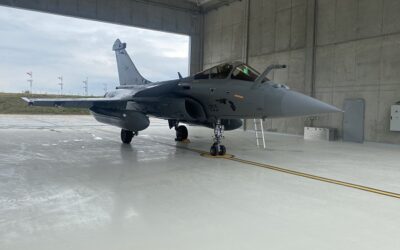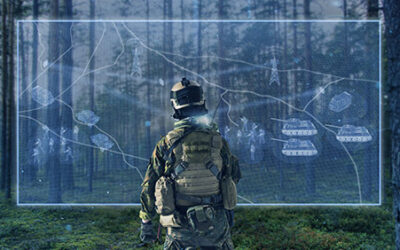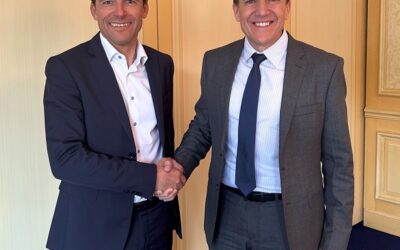Working with MARIN
Cruden (Booth #313) is offering live demonstrations of its fast, small ship technology simulator that has been developed to offer training organisations: increased hours; reduced costs; repeatable, programmable conditions and scenarios; realistic and detailed data-led AAR; and protection to trainers and trainees from physical stress.
Cruden CEO, Maarten van Donselaar, said his company was convinced by market research that there is a real need for a Fast Small Craft Simulator (FSCS), and acted on this with R&D: “The company’s belief in the need for such a simulator was reinforced by the high level of interest in the concept when it was first shown at the High-Speed Boat Operations Forums at Lisbon, Portugal in 2015 and Gothenburg, Sweden, in 2016. At these exhibitions, the prototype was tried and very well received by high speed boat operators from all over the world.”
The Amsterdam, The Netherlands-based company is moving forward quickly to develop this competency. A pre-production system was delivered earlier this year to the Royal Netherlands Navy (RNLN) in Den Helder for use by the Netherlands Defence Academy. The CEO pointed out: “RNLN is expected to procure three production-specification simulators to support their small craft training by the end of 2018. Demonstrations for police corps, coast guards and special forces have taken place in the last months and contracts are in preparation.”
Mr. van Donselaar further observed the development of the RNLN Fast Small Ship Simulator was a collaborative effort involving Cruden, “the world leader in automotive, motorsport, and marine simulators; MARIN (Marine Research Institute Netherlands), which has vast experience developing complex simulation environments for the maritime and nautical industry; and Tree C Technology BV (The Netherlands), a 3-D visualisation and software developers well-known in the world of offshore simulation.”
The CEO responded to the offer to present the business case for its R&D investment in this simulator, stating it, “became apparent when the Dutch Ministry of Defence looked for a way to reduce costs and injuries incurred when training crews of its 48 FRISCs (Fast Raiding, Interception and Special forces Craft). FRISC crews are subjected to accelerations of up to 16g in rougher seas. It takes only one such impact to cause knee or spinal injuries, and yet FRISC instructors – expensively trained and in short supply – have sea time for 1,000 to 1,400 hours every year. The FSSS provides a realistic and cost-effective training platform, eliminating the cost and inconvenience of injuries.”
In addition, a simulator prevents training programmes being interrupted by weather; guarantees the same level of experience for each student because all types of condition can be replicated exactly; eliminates the real-world inconvenience and expense of having to travel to find appropriate conditions; allows specific operational circumstances to be recreated at will; and enables the rehearsal of potentially dangerous tactics and manoeuvres in complete safety. Adding simulated weapon systems allows for combined shooting exercises with high speed navigation. The corporate leader said, “These can not be performed at the base where otherwise, crew and material must travel (far) to live firing training areas.”
Further, “financial savings are made in operational costs. Although the RNLN’s three simulators will cost about the same as five FRISCs, over time the simulators will pay back this difference and more, because there are fewer parts to maintain, no fuel cost and there’s no risk of expensive accident damage,” Mr. van Donselaar added.
The Cruden fast, small ship simulator, is establishing a unique niche in this market space. Unlike most large-vessel bridge simulators, the boat’s cockpit and crew are located on top of a highly dynamic motion platform. This moveable base adds a new dimension to training by physically cueing the body forces associated with high-speed boat operations. The industry expert emphasised, “The ability to feel relevant hydrodynamic effects brings unprecedented authenticity to the rehearsal of critical handling situations. Cruden’s FSCS can be configured to replicate the behaviour of almost any fast, small craft or patrol vessel. Multiple simulators can be combined in a shared scenario and additional boats can be inserted. Fendering is supported and boats will respond to each other’s wake system.”
Fidelity is important in this programme – the console holds fully operational OEM navigation, radar and communication equipment (SeaCross, Simrad, Raymarine, Furuno, Garmin and Icom are supported), enabling simulation of full missions as well as seakeeping, docking and davit operations. Realistic night scenes and simulated electro-optic & IR systems complement the training capabilities of the system.
Marty Kauchak
























